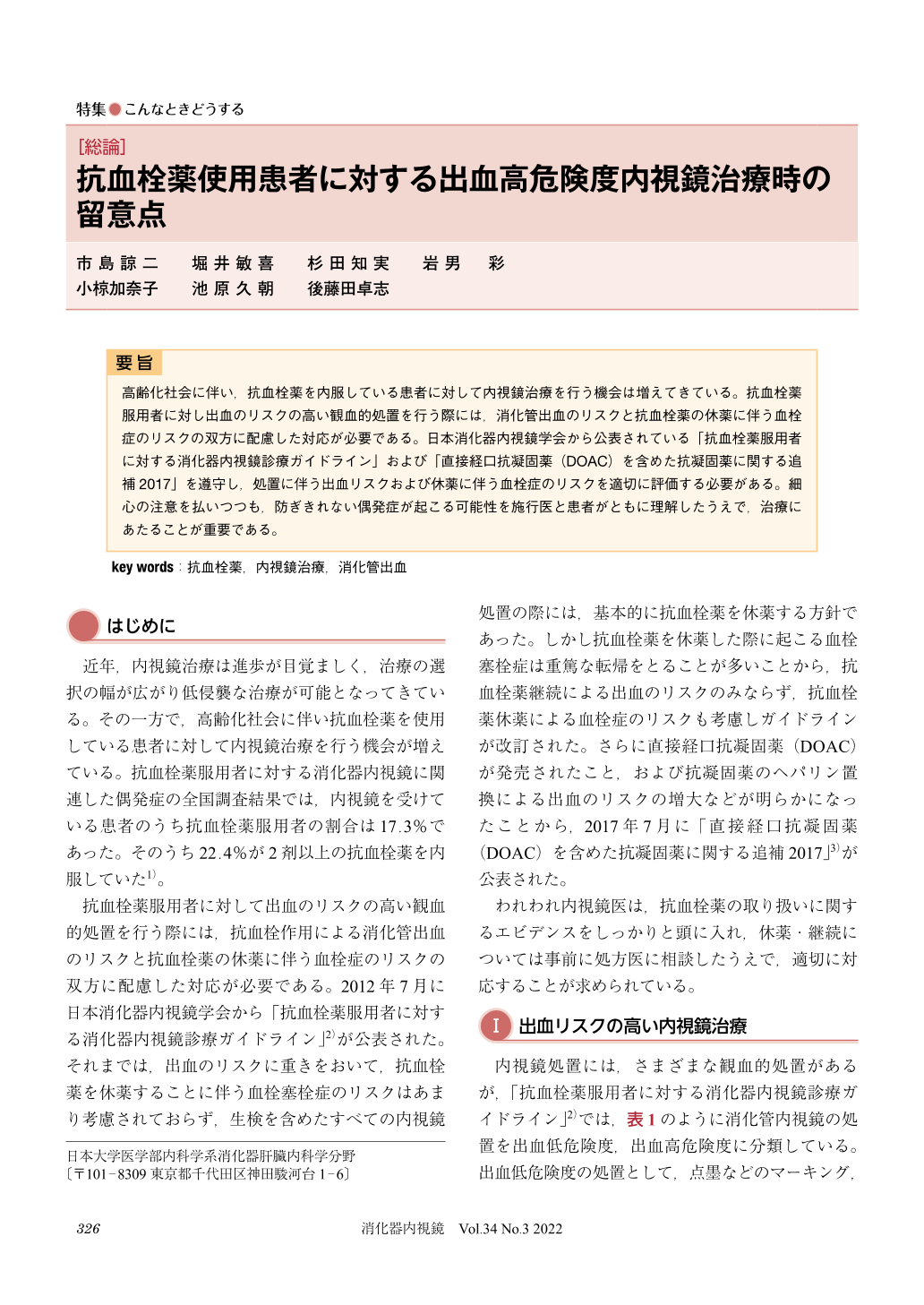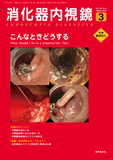Japanese
English
- 有料閲覧
- Abstract 文献概要
- 1ページ目 Look Inside
- 参考文献 Reference
要 旨
高齢化社会に伴い,抗血栓薬を内服している患者に対して内視鏡治療を行う機会は増えてきている。抗血栓薬服用者に対し出血のリスクの高い観血的処置を行う際には,消化管出血のリスクと抗血栓薬の休薬に伴う血栓症のリスクの双方に配慮した対応が必要である。日本消化器内視鏡学会から公表されている「抗血栓薬服用者に対する消化器内視鏡診療ガイドライン」および「直接経口抗凝固薬(DOAC)を含めた抗凝固薬に関する追補2017」を遵守し,処置に伴う出血リスクおよび休薬に伴う血栓症のリスクを適切に評価する必要がある。細心の注意を払いつつも,防ぎきれない偶発症が起こる可能性を施行医と患者がともに理解したうえで,治療にあたることが重要である。
With the aging of society, there are increasing opportunities for endoscopic treatment for patients taking antithrombotic drugs. When performing treatment with a high risk of bleeding for people taking antithrombotic agents, consideration should be given to the risk of gastrointestinal bleeding due to antithrombotic agents and the risk of thrombosis due to withdrawal of antithrombotic agents. is necessary. In compliance with the “Guidelines for Gastroenterological Endoscopy for Patients Taking Antithrombotic Drugs” and “Supplementary 2017 for Anticoagulants Including Direct Oral Coagulation Drugs (DOAC)” published by the Japan Gastroenterological Endoscopy Society. In addition, it is necessary to appropriately evaluate the risk of bleeding associated with treatment and the risk of thrombosis associated with drug suspension for each patient in consultation with the prescribing doctor. While paying close attention, it is important for both the practitioner and the patient to understand the possibility of unpredictable accidents before treatment.

© tokyo-igakusha.co.jp. All right reserved.


